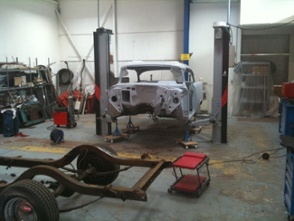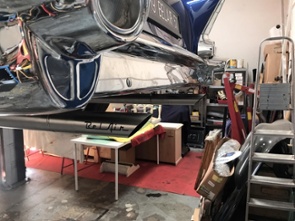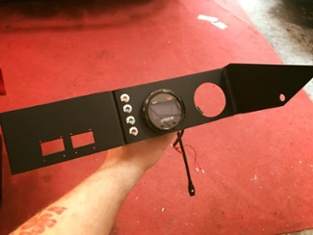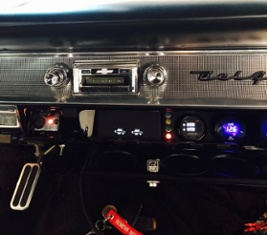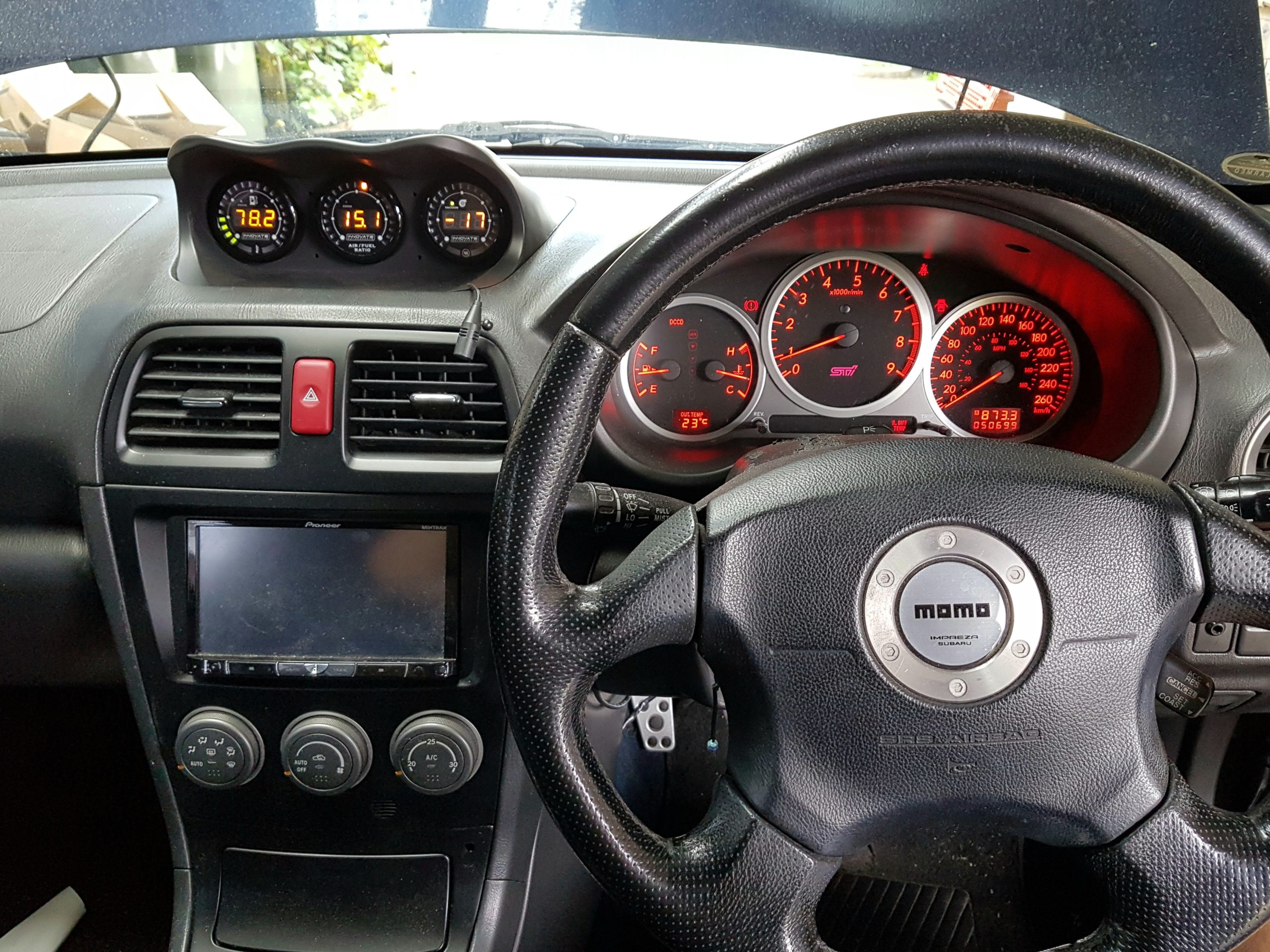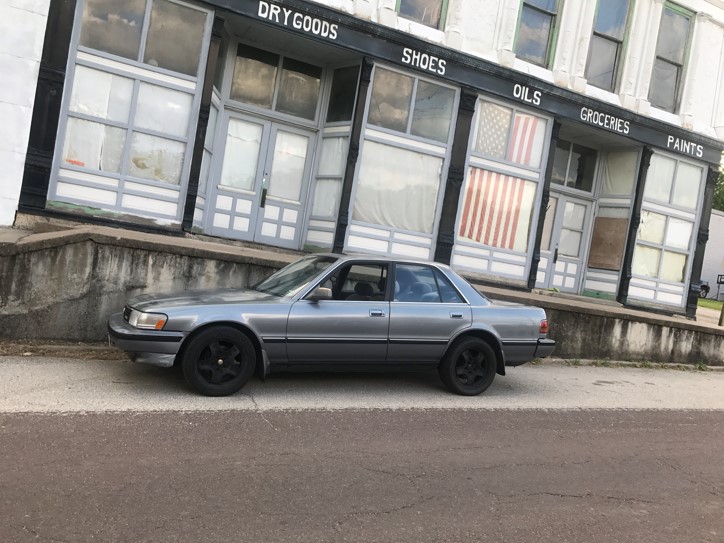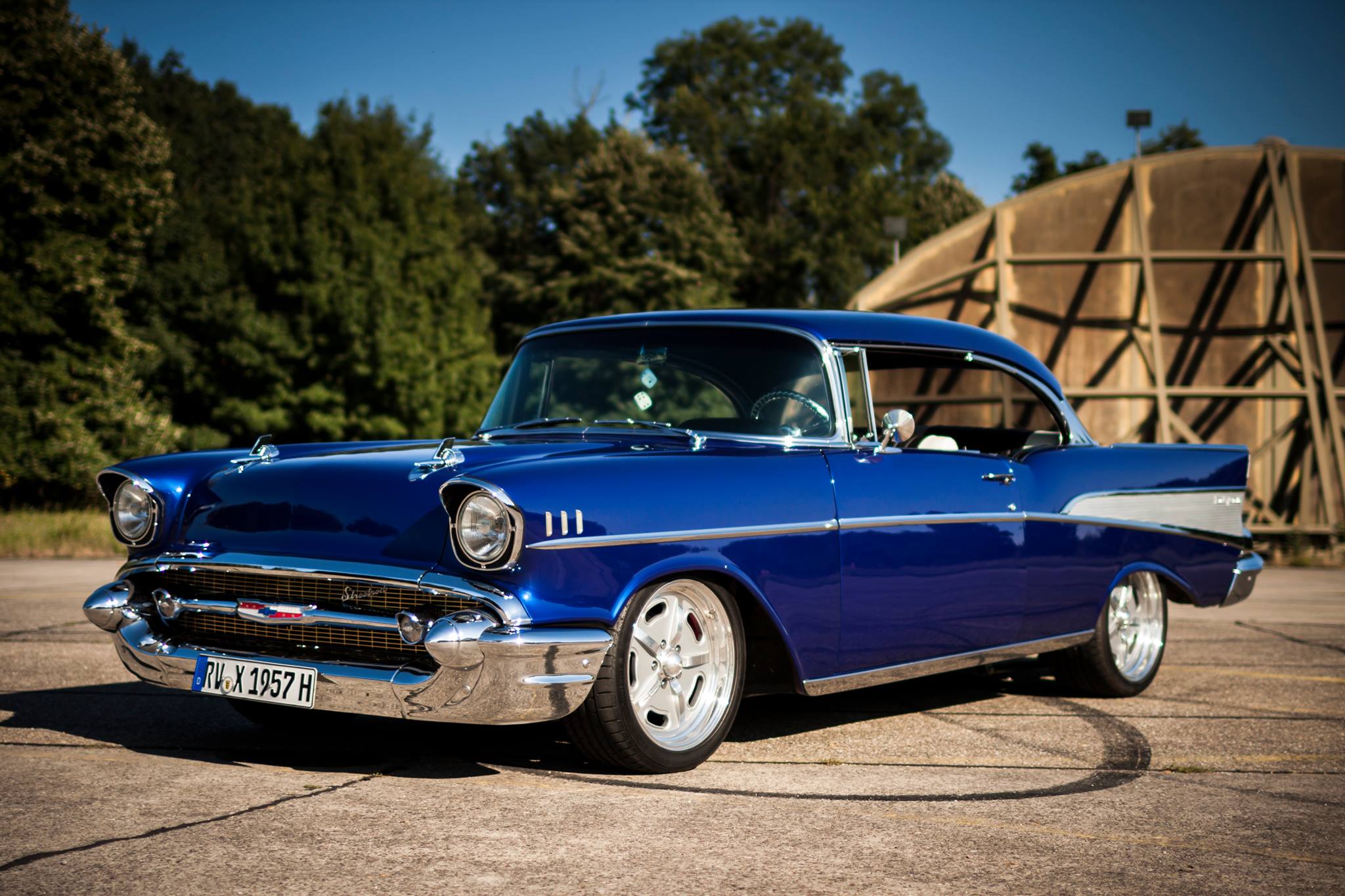Heiko Hammann brought a little bit of Detroit iron to his native Germany with this custom, twin-turbo 1957 Chevy.
While Tri-Five Chevys are a staple of car shows around the United States, they’re a decidedly less common sight in Heiko Hammann’s neck of the woods. An industrial mechanic from Gengenbach, Germany, Hammann says that’s precisely the reason he chose a Bel Air for his most recent project.
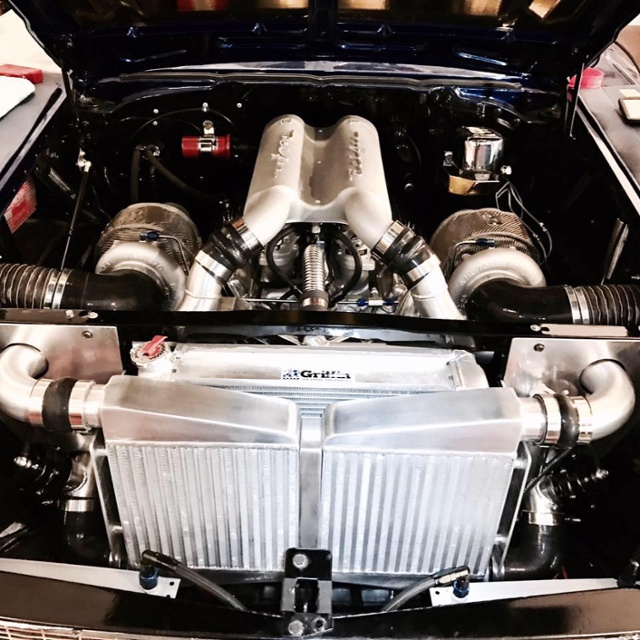
“I’ve had a lot of different projects: a Mitsubishi Eclipse, a Toyota Supra, an MR2 and a few others,” he explains. “But this time around I wanted to get something really rare and fun to work on. I found this ’57 Chevy and immediately fell in love.”
Hammann’s passion for this project is evident in the results – this Bel Air would likely turn as many heads on Woodward Blvd as it does across the pond. “After I did some searching and found the car, I spent the first year just driving it around and enjoying it,” he tells us. “But after a while my hands were restless, so I decided to give the car a frame-off restoration.”
To learn more about the Innovate Dual Lamda Gauge (DLG-1), click here.
This build features a number of unique-yet-subtle touches throughout, and many of those tweaks are the sort that only become evident the longer you look at the car — like these custom fabricated tail pipes that sport the Bel Air logo.
After three years of working on the car in the evenings he had the car back on the road, powered by a mild 350ci Chevy small block. But it wasn’t long before Hammann was back in the garage. “I wanted more power,” he said. “So the 350 came out and went to a friend of mine with a ’69 Camaro, and I bought a Dart SHP block and got started on building that up.”
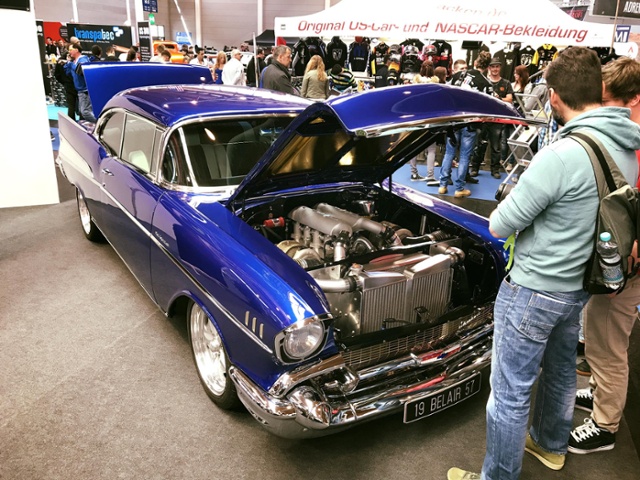
With forged internals and 8.5:1 compression in the mix, Hammann brought forced induction into the equation by way of two, 76mm turbochargers, which feed an Inglese Eight Stack system through a custom intake. “A friend of mine is a technical model builder for a company that designs parts for Aston Martin and built the intake runners that are used on the Bugatti Veyron,” Hammann says. “I asked him if he could cast a mold for my intake – I was confident that he could get it right on the first try, and sure enough, he did.” At this point everything is up and running but they are still in the process of dialing in the tune, which is managed by a FAST Sportsman XFI ECU. He expects 700 horsepower at a minimum when all is said and done.
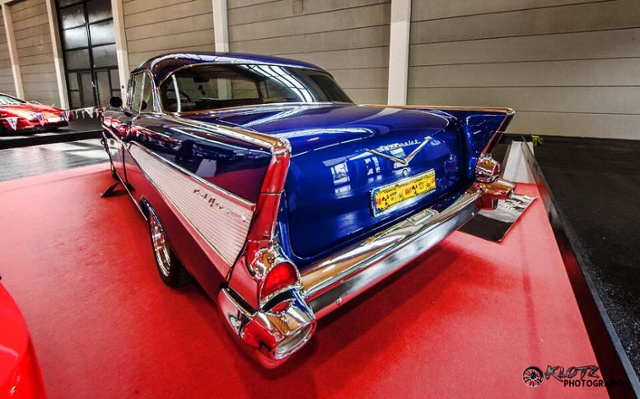
To monitor the engine’s vitals he selected an Innovate DLG-1 for the job. “I think Chevrolet did a great job designing the interior, and I wanted to keep it looking fairly stock, so that meant no extra gauges on the dashboard,” Hammann explained. “I was looking for a two-in-one solution for my AFR gauge because I did not have the luxury of a lot of extra space in there, and I really like the DLG-1 because it’s easy to read even though it’s a bit further away than you might normally mount a gauge.”
Hammann wanted to keep the interior’s original look intact, so he built a Tri-Five Chevy to house the gauges that woulddisplay vitals without messing up the dashboard’s aesthetic layout.
These days the Bel Air is making the rounds at various car shows as one might expect, but Hammann assures us this car was built to be driven. “The idea behind the project initially was just to make a fun cruiser. Now it’s about annoying those guys out on the Autobahn.”
Although the quality of this restoration is probably a bit too nice for Hammann to spend a lot of time at the track, he says he still wants to get it out to the strip to find out exactly what the car is capable of in the quarter mile. “The risk of kissing a wall with the car will keep me from racing it regularly, but I still need to know a track time.”

